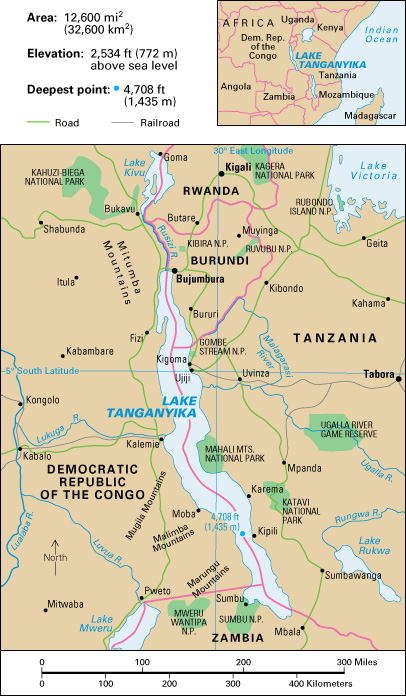Lake Tanganyika, << `tang` guhn YEE kuh >>, in east-central Africa, is the world’s longest freshwater lake and the second deepest. Only Lake Baikal, in Russia, is deeper. The lake is bordered by Burundi and Tanzania on the east and by Zambia and the Democratic Republic of the Congo on the west. It is 420 miles (680 kilometers) long, and its greatest depth is 4,708 feet (1,435 meters). The lake covers about 12,600 square miles (32,600 square kilometers). Lake Tanganyika’s shores are mountainous. Only one major river, the Rusizi, drains into the lake. It flows from Lake Kivu in the north. The lake’s outlet is the Lukuga River.

The first Europeans to see Lake Tanganyika were Richard Francis Burton and John Hanning Speke. They reached Ujiji, on the eastern shore, in 1858. Henry M. Stanley found the missing missionary-explorer, David Livingstone, at the same point in 1871 (see Stanley and Livingstone).
